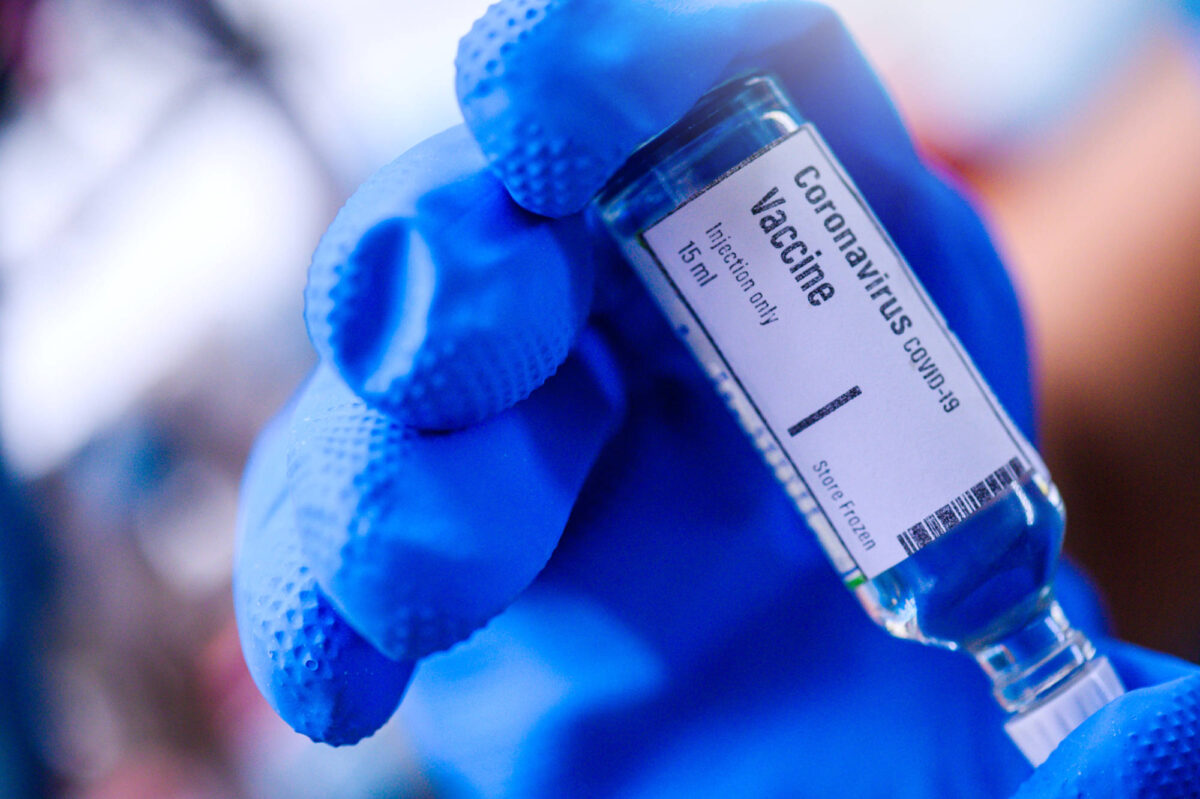COVID-19 Vaccine Update

Roughly nine months after the COVID-19 pandemic began its sweep across the U.S., killing about one in a thousand people and infecting roughly 20 million to date, scientists have succeeded in developing vaccines demonstrated to prevent the disease.1 A successful and widespread vaccine for COVID-19 would greatly improve public health and a relaxation of guidelines. The U.S. Food and Drug Administration (FDA) has granted two vaccines emergency use authorization (EUA) status and others are entering or completing large-scale phase 3 testing. These are the latest updates on the leading U.S. candidates:
Pfizer/BioNTech: The FDA granted the BNT162b2 vaccine developed by Pfizer and BioNTech EUA on December 11, spurring an initial shipment of 2.9 million vaccines nationwide. The two-dose vaccine, approved for those 16 and older, uses mRNA technology to create proteins that mimic those used to infect the body by the SARS-CoV-2 virus, which causes COVID-19. The proteins trigger the body’s immune cells to create antibodies that bolster an individual’s future immunity to COVID-19.2
In its phase 3 trial, Pfizer/BioNTech’s vaccine was found to be 95% effective in preventing COVID-19, and vaccine efficacy rates were similar across different age, race, ethnicity, sex, and body-mass index groups. Severe side effects (like pain and fatigue) were observed in roughly two percent of partcipants.3 Since distribution of the vaccine has begun, there have been at least three reports of anaphylaxis, but distribution is continuing.4
Moderna: The FDA granted Modern’s mRNA-1273 vaccine EUA status on December 18. The vaccine uses an mRNA technology similar to that of Pfizer/BioNTech’s vaccine, but unlike the latter, its two doses are administered four weeks apart (as opposed to three) and stored at a higher temperature (-4 degrees Fahrenheit as opposed to -92 degrees, a condition that has created some complications for the distribution of Pfizer/BioNTech’s vaccine). Many states hoped to distribute their share of the initial distribution, totaling 5.9 million vaccines, to less accessible hospitals, bolstering the initial shipment of Pfizer vaccines that numbered fewer than many state leaders had expected.5
Moderna’s vaccine demonstrated an efficacy (94.5%) and safety profile comparable to Pfizer/BioNTech’s.6 Notably, Moderna’s participant pool was more diverse than Pfizer/BioNTech’s, with over 30% coming from black or Latinx communities of color, compared to about 19% in the latter trial.6,7
Johnson and Johnson: On December 17, Johnson & Johnson finished enrolling 45,000 participants for the phase 3 trial of its single-dose vaccine candidate (a second Phase 3 trial of a two-dose regimen is ongoing). The company expects to release preliminary data on the single-dose vaccine by the end of January 2021. In mid-October, the trial was temporarily paused after a participant experienced a serious medical event but resumed less than two weeks later when no clear evidence implicated the vaccine as its cause. In December, the company announced that it was lowering its enrollment cap from its original target of 60,000, given the prevalence of the virus.8
The vaccine candidate, Ad26.COV2.S, uses a technology called AdVac, which was developed by Belgium-based pharmaceutical company, Janssen, and used in response to the Ebola epidemic. AdVac technologies differs from mRNA vaccines in that they use a harmless form of a virus called an adenovirus to transport the genetic code of an antigen (a part of the virus) into the body, allowing the immune system to learn to defend itself from the virus.8
AstraZeneca: Clinical trials are ongoing for the AZD1222 vaccine developed by UK-based pharmaceutical company AstraZeneca in partnership with the University of Oxford. The vaccine combines technologies described above, using an adenovirus to transport genetic material—DNA, as opposed to mRNA—into the cell to produce proteins the body can learn to combat. AstraZeneca reported dosing discrepancies in its clinical trial and mixed efficacy results (90% in a small pool of participants who received a half-dose and 62% in a larger pool).9,10 The vaccine, once anticipated to be a key component of the U.S. arsenal due to its low-cost and easy storage, has encountered other barriers toward approval. A safety scare in October sparked by severe neurological symptoms in a participant caused the FDA to halt the U.S. trial, which has since resumed but is still enrolling participants to date.10
References
- COVID-19 Cases, Deaths, and Trends in the US | CDC COVID Data Tracker. Centers for Disease Control and Prevention. https://covid.cdc.gov/covid-data-tracker/. Published 2020.
- Thomas K, LaFraniere S, Weiland N, et al. F.D.A. clears Pfizer vaccine, and millions of doses will be shipped right away. The New York Times. https://www.nytimes.com/2020/12/11/health/pfizer-vaccine-authorized.html. Published December 12, 2020.
- Polack FP, Thomas SJ, Kitchin N, et al. Safety and efficacy of the BNT162b2 mRNA COVID-19 vaccine. N Engl J Med. 2020;(NEJMoa2034577). doi:10.1056/nejmoa2034577
- Johnson C, Achenbach J. FDA investigating rare allergic reactions to Pfizer coronavirus vaccine but says rollout will continue. The Washington Post. https://www.washingtonpost.com/health/covid-vaccine-allergic-reactions/2020/12/17/a8490340-409d-11eb-8bc0-ae155bee4aff_story.html. Published 2020.
- Grady D, Goodnough A, Weiland N. F.D.A. authorizes Moderna vaccine, adding millions of doses to US supply. The New York times. https://www.nytimes.com/2020/12/18/health/covid-vaccine-fda-moderna.html. Published December 19, 2020.
- Moderna’s COVID-19 vaccine candidate meets its primary efficacy endpoint in the first interim analysis of the Phase 3 COVE study. Modernatx.com. https://investors.modernatx.com/news-releases/news-release-details/modernas-covid-19-vaccine-candidate-meets-its-primary-efficacy
- Exclusive: Nearly a fifth of enrollees in Pfizer, BioNTech COVID-19 vaccine study are Black or Latino. Reuters. https://www.reuters.com/article/us-health-coronavirus-pfizer-vaccine-exc-idUSKBN25H2HM. Published August 21, 2020.
- Vaccine Technology. Janssen.com. https://www.janssen.com/infectious-diseases-and-vaccines/vaccine-technology
- Voysey M, Clemens SAC, Madhi SA, et al. Safety and efficacy of the ChAdOx1 nCoV-19 vaccine (AZD1222) against SARS-CoV-2: an interim analysis of four randomized controlled trials in Brazil, South Africa, and the UK. Lancet. Published online 2020. doi:10.1016/S0140-6736(20)32661-1
- Robbins R, LaFraniere S, Weiland N, Kirkpatrick DD, Mueller B. Blunders eroded US confidence in early vaccine front-runner. The New York Times. https://www.nytimes.com/2020/12/08/business/covid-vaccine-oxford-astrazeneca.html. Published December 8, 2020.
